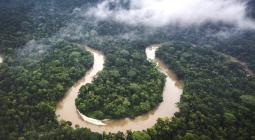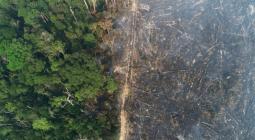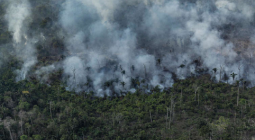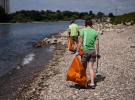Large parts of Amazon may never recover, major study says
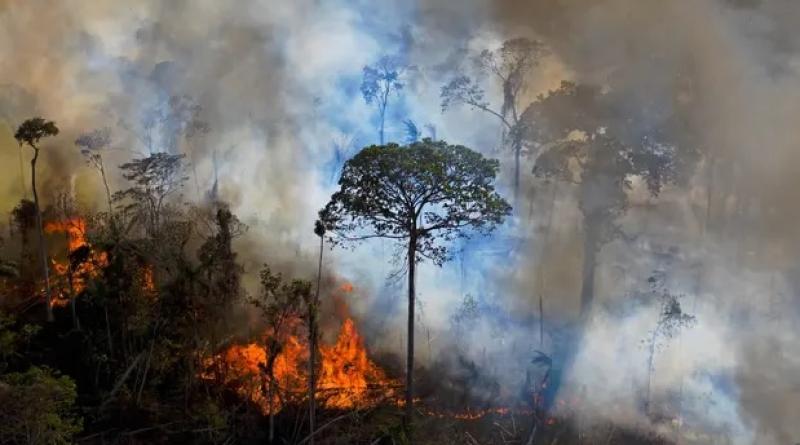
Swathes of rainforest have reached tipping point, research by scientists and Indigenous organisations concludes
Environmental destruction in parts of the Amazon is so complete that swathes of the rainforest have reached tipping point and might never be able to recover, a major study carried out by scientists and Indigenous organisations has found.
“The tipping point is not a future scenario but rather a stage already present in some areas of the region,” the report concludes. “Brazil and Bolivia concentrate 90% of all combined deforestation and degradation. As a result, savannization is already taking place in both countries.”
Scientists from the Amazonian Network of Georeferenced Socio-environmental Information (RAISG) worked with with the Coordinator of Indigenous Organizations of the Amazon Basin (Coica) to produce the study, Amazonia Against the Clock, one of the biggest so far, covering all nine of the nations that contain parts of the Amazon.
It found that only two of the nine, tiny Suriname and French Guiana, have at least half their forests still perfectly intact. In other countries, there is between 26% and 43% of forests perfectly intact, while between 2% and 25% of rainforest has been lost, with degradation of some remaining forest.
Amazonian Indigenous organisations representing 511 nations and allies are calling for a global pact for the permanent protection of 80% of the Amazon by 2025.
The 80% target is a massive challenge given that only 74% of the original forest remains. Urgent action is needed not only to protect the forest still standing but also to restore degraded land and get back to that 80% level.
“It’s difficult but doable,” said Alicia Guzmán, an Ecuadorian scientist who coordinated the report. “It is all dependent on the involvement of the Indigenous communities and people who live in the forest. That and the debt.”
Guzmán said giving Indigenous groups stewardship of more land – and crucially, providing state protection for it and removing legal loopholes that allow extractive industries in – was the surest way to guarantee preservation.
Almost half the Amazon has been designated either a protected area or Indigenous territory, and only 14% of all deforestation takes place there. Currently, about 100m hectares of Indigenous land are under dispute or awaiting formal government recognition.
“Having Indigenous people in the decision-making process means we count on the knowledge of those who know most about the forest,” said Guzmán. “And they need budgets.”
They also need their land to be safeguarded from land-grabbers and extractive industries.
Mining is one of the growing threats, with protected areas and Indigenous land among the areas most coveted by prospectors. Much of the mining is clandestine and illegal but around half in protected areas is done legally, and scientists called on governments to reject or revoke mining permits.
Oil is another threat, particularly in Ecuador, the source of 89% of all the crude exported from the region.
Oil blocks cover 9.4 % of the Amazon’s surface and 43% of them are in protected areas and Indigenous land. More than half the Ecuadorian Amazon is designated as an oil block, the report said, and the portions in Peru (31%), Bolivia (29%) and Colombia (28%) are also worrying.
Of even greater concern is farming. Agriculture is responsible for 84% of deforestation, and the amount of land given over to farming has tripled since 1985, according to the report. Brazil is one of the world’s main food exporters, with soy, beef and grains feeding large parts of the world and bringing in billions of dollars each year.
A key recommendation of the study is more collaboration between regional governments, international financial institutions and the private equity firms that hold much of the debt owed by Amazonian nations.
Latin America is the most indebted region in the developing world and writing off that debt in return for preservation commitments would be significant.
“They have a unique opportunity before them to forgive existing debt in exchange for commitments to end industrial extraction and promote protections in key priority areas, indigenous territories and protected areas,” the report says.
Among the other 13 “solutions” proposed in the report are: a complete suspension of new licensing and financing for mining, oil, cattle ranching, large dams, logging, and other such activities; increased transparency and accountability along supply chains; the restoration of deforested land; new governance models that allow for increased representation and recognition for native peoples.
Although the task is enormous, there are reasons for optimism and particularly in Brazil, where the president, Jair Bolsonaro, faces the former incumbent Luiz Inácio Lula da Silva in a tense election on 2 October.
Lula leads in the polls. During his time in power in the 2000s, deforestation fell by more than 80%.
cover photo: Smoke rises from an illegally lit fire in a rainforest reserve south of Novo Progresso in Pará state, Brazil. Photograph: Carl de Souza/AFP/Getty Images


